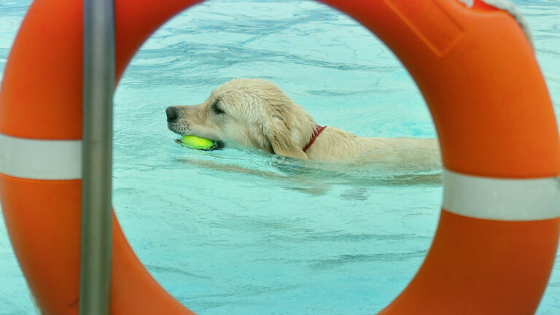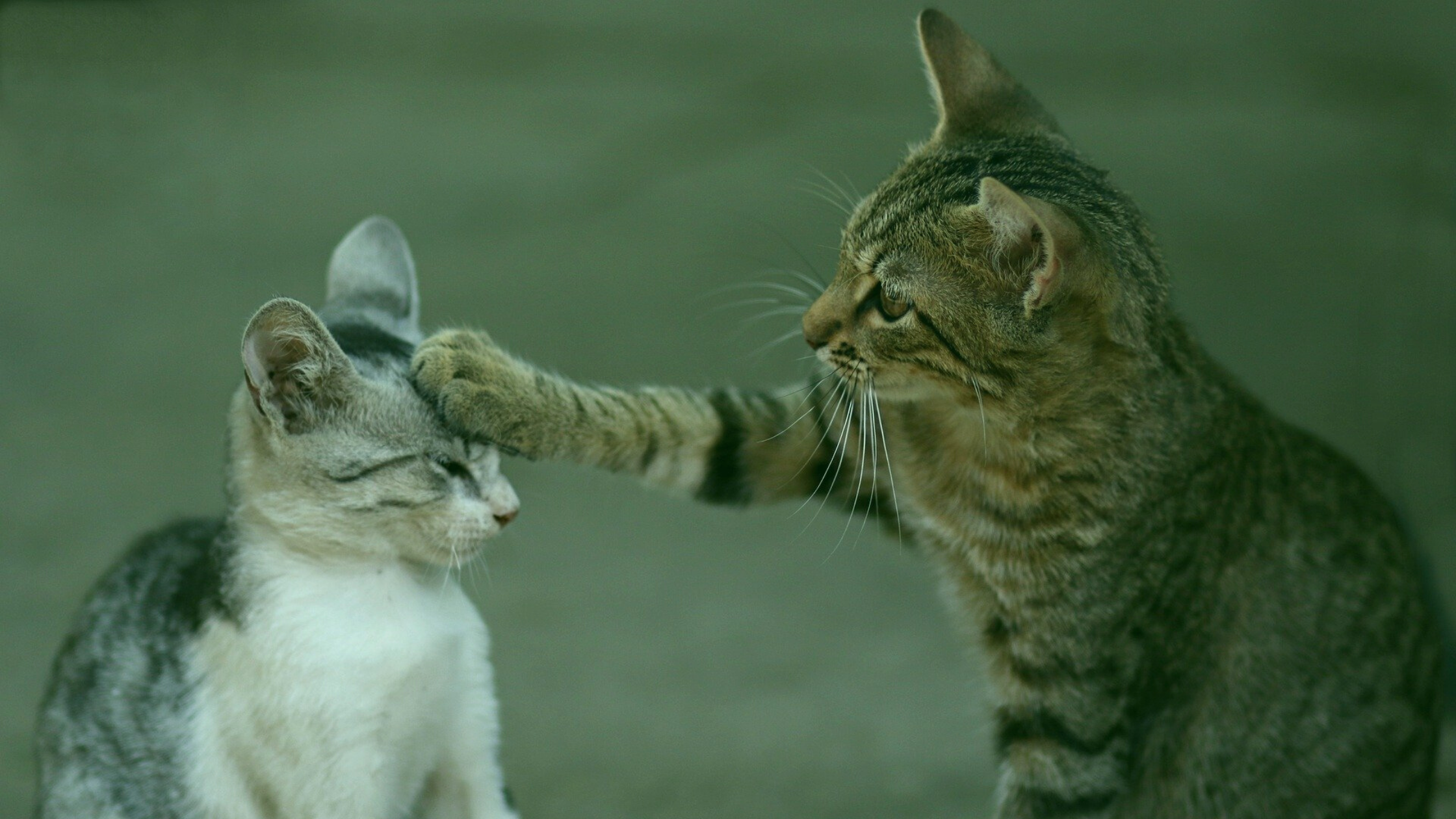Indoor Enrichment
Physical and Mental Stimulation for Cooped Up Pets
 Whether it’s snowing, raining, or just too hot, sometimes it’s safer to keep a pet indoors. Whatever the reason, it’s important to keep pets from feeling confined or bored by engaging them in mental and physical activities. Cats and dogs are naturally creatures of habit, so it can be a challenge to set up a routine that is reliable without becoming monotonous. By tuning into their other animal instincts, however, we can ensure their play indoors staves off boredom and maintains their well-being.
Whether it’s snowing, raining, or just too hot, sometimes it’s safer to keep a pet indoors. Whatever the reason, it’s important to keep pets from feeling confined or bored by engaging them in mental and physical activities. Cats and dogs are naturally creatures of habit, so it can be a challenge to set up a routine that is reliable without becoming monotonous. By tuning into their other animal instincts, however, we can ensure their play indoors staves off boredom and maintains their well-being.
Enriching Dogs through Social Interaction and Challenging Self-Play
Dogs “need both physical and mental stimulation to help keep them healthy and happy,” according to Samantha Drake’s 8 Simple, Cost-Efficient Ways to Keep Your Dog Mentally Stimulated. Left to their own devices, dogs often invent their own entertainment in the form of bad habits such as hyperactivity, barking, destructive chewing, and “investigative behaviors” like rummaging through the trash. The best way to deter these undesirable behaviors is to offer your dog acceptable alternatives through interactive play and distractive toys.
Bonding with Your Dog with Interactive Play
The amount of daily activity a dog requires depends on various factors such as age and breed. In an article for the Veterinary Centers of America (VCA) titled Dog Behavior and Training – Play and Exercise, Drs. Debra Horwitz and Gary Landsberg write:
Selecting an appropriate amount and type of play and exercise will depend on the type of dog. Puppies and adult dogs from breeds that have been bred for their stamina or are “working breeds” often have higher exercise requirements. For purebred dogs, consider their traditional purpose and the normal amount of energy that would be expended in that occupation when deciding the type and amount of play to provide.
Dogs are instinctively social animals and enjoy socializing, not only with other dogs, but also their adopted “pack” of humans. Examples of interactive play include classic games like fetch, teaching your dog a new trick, or turning a training session into a game. Whatever sort of play you engage in, the positive association of spending time with you will strengthen the bond of trust and companionship between canine and human.
Occupying a Dog’s Attention with Toys
Sometimes our busy schedules may necessitate leaving pets alone for lengthy periods of time, but dogs still need something to occupy their attention even when no one is available to play with them. This may be especially important for dogs suffering from separation anxiety, but the benefits extend to any dog needing some form of entertainment to distract them from loneliness or destructive behavior.
Food is the main method used for keeping dogs independently occupied. Frozen dog treats, KONG toys stuffed with peanut butter or other foods, or even making ice cubes using meat- or vegetable-based broths require dogs to work at getting to these treats by chewing, licking, or shaking. Having a variety of toys available to play with can also help stimulate your pet, as “changing out” toys occasionally prevents pets from getting bored of the same toy every time they are alone.
When using a toy or treat to occupy your dog, Drake says that “it’s important to initially supervise your dog with a new toy” to make sure it can be played with safely before leaving your dog alone with it. Many objects can present a hazard if small pieces can be chewed off, as this may lead to choking, intestinal blockage, or create sharp edges on the toy that may cause injury.
Stimulating Cats with Novelty and Brevity
Cats are typically more solitary in nature than dogs, but this doesn’t mean they don’t require mental and physical stimulation. While dogs may thrive on long sessions of social interaction, cats play in brief, sudden bursts of energy. Because of this the key is for cats to play often, not long; the quantity of play sessions may be a higher priority than how long they last. In another VCA article, Cat Behavior and Training-Enrichment for Indoor Cats, Drs. Horwitz and Landsberg recommend incorporating no less than three play sessions a day into your cat’s schedule.
Using Toys to Tune into Feline Predatory Instincts
Novelty is a key part of maintaining a cat’s interest for more than a few minutes at a time. Just because a cat is tired of chasing a particular toy doesn’t mean he’s tired of playing altogether—he just wants to chase something different. The Humane Society of the United States suggests putting only a few toys out at a time, so that when a cat bores of the current toys they can be rotated out in favor of others kept in storage. In this way, even “old” toys can stay fresh and interesting.
When it comes to toys, cats tend to have individual tastes as to what they find intriguing. One of the best methods of enriching the indoor life of a cat is by playing to their natural predatory instincts. In general, cats enjoy toys that encourage stalking, chasing, or pouncing, such as:
- Toys that move, such as toys that dangle from doorknobs or have motorized parts
- Small toys that mimic the size and/or appearance of natural prey such as rodents
- Toys with new or unpredictable features such as strange and interesting textures, components that make noise, or puzzle toys that dispense treats
Cats also enjoy high places where they can climb up and observe their surroundings. In addition to the traditional cat trees, there are several products sold at pet shops that create interesting places to perch. One of the best locations to place a cat tree or other feature is near a window, where cats can sunbathe and watch outdoor activity.
Indoor Enrichment for Exotic Pets
Birds, reptiles, and small mammals may spend the majority of their time in cages or other containments that may not be adequate for promoting physical, emotional, or mental health. According to dvm360’s Katie James, these pets “need interaction with their owners and time out of their cages. A lack of environmental enrichment can lead to behavioral and health issues” such as destructive acts (in some cases, even self-harm), anxiety, and lethargy. James says “one of the best things to provide the animal with is variety in its environment.”
In Environmental Enrichment: A Review, Arnold S. Chamove writes about how caged animals are often hindered from carrying out the full range of instinctual behavior. When animals are given the space and opportunity to explore this range of behavior, the benefits may include:
- Physical exercise
- Mental engagement
- Stress relief
- Play and socialization
- Sensory stimulation
Because different species have different instincts, seek guidance from a veterinary professional that specializes in exotic animals to learn specific ways to enrich your exotic pet’s life.
Puzzle toys, toys that dangle from doorknobs, and motorized toys are good options for independent play; providing a selection of different sorts of toys is key to keeping a cat from becoming bored. In addition to commercially available accessories, cats may find entertainment in simple household items, such as paper bags and cardboard boxes. As with dogs and their toys, make sure your cat toys cannot be swallowed, choked on, or broken to create sharp edges. Most cat toys can be used interactively or independently, but always be sure that the toys are safe before leaving your cat to play alone.
Challenging a Cat to “Hunt” for Food
In addition to being unsocial, cats have a reputation of being picky or idiosyncratic in their eating habits. Part of this could be due to being fed the same things in the same place at the same time every day. The feline’s hunter instinct is to seek a variety of food sources from a variety of places. Imitating this in your home is as easy as moving the cat’s food or water, dividing it among different areas of the house, or even placing it in a high place that requires the cat to climb or leap up to get it.
Balancing Routine Activity with Fresh Ideas
Offering a variety of play, toys, and treats are common methods of enriching your pet’s indoor life. Another great way of preventing boredom is simply changing the daily routine:
- Alter the regular schedule of play times or walks
- Arrange a “play date” for your dog with other canines
- Teach your pet a new trick, or move their food and toys to different places in the house
All of these methods contribute to making life more exciting for your pets—and, consequently, increase their mental and emotional well-being.
It’s a challenge balancing a reliable routine of playtime and exercise with spontaneity and fresh experiences. Keeping a pet indoors for whatever reason can be an ordeal not only for the cooped up pet, but also for the humans who want the best for them. However, through trial and error and a bit of creativity, making your indoor environment stimulating can ultimately enrich and benefit the lives of everyone who lives there—animal and human alike.
- Becker K. Is This Why Kitty Annoys You or Vocalizes All Night? Healthy Pets with Dr. Karen Becker, Presented by Mercola. https://healthypets.mercola.com/sites/healthypets/archive/2018/09/04/bored-kitty.aspx?utm_source=petsnl&utm_medium=email&utm_content=art1&utm_campaign=20180904Z1&et_cid=DM231569&et_rid=410166847. September 4, 2018. Accessed September 2018.
- Chamove AS. Environmental Enrichment: A Review. Animal Welfare Institute. https://awionline.org/content/environmental-enrichment-review. Originally published in Animal Technology (1989) Vol. 40, No.3. Accessed August 2018.
- Drake S. 8 Simple, Cost-Efficient Ways to Keep Your Dog Mentally Stimulated. https://www.petmd.com/dog/care/8-simple-cost-efficient-ways-keep-your-dog-mentally-stimulated. Accessed August 2018.
- Horwitz D, Landsberg G. Cat Behavior and Training – Enrichment for Indoor Cats. VCA Hospitals. https://vcahospitals.com/know-your-pet/cat-behavior-and-training-enrichment-for-indoor-cats. Accessed August 2018.
- Horwitz D, Landsberg G. Dog Behavior and Training – Play and Exercise. VCA Hospitals. https://vcahospitals.com/know-your-pet/dog-behavior-and-training-play-and-exercise. Accessed August 2018.
- Horwitz D, Landsberg G. Exercise and Your Obese Cat. VCA Hospitals. https://vcahospitals.com/know-your-pet/exercise-and-your-obese-cat. Accessed August 2018.
- Humane Society of the United States. 10 Tips to Keep Your Cat Happy Indoors. Humanesociety.org. http://www.humanesociety.org/animals/cats/tips/cat_happy_indoors.html?credit=web_id97074751. Accessed August 2018.
- James K. More than just a pet in a cage—exotics need enrichment too. DVM360 MAGAZINE. http://veterinarynews.dvm360.com/more-just-pet-cage-exotics-need-enrichment-too?pageID=2. Jun 17, 2017. Accessed August 2018.
- Voltolina V. 5 Ways to Keep Your Indoor Cat Purring. PetMD. https://www.petmd.com/cat/care/5-ways-keep-your-indoor-cat-purring. Accessed August 2018.
Written by Laura Strommen
Edited by the Staff at Pet Health
© Pet Health, a division of Women’s International Pharmacy, Inc.





